 There are people who enjoy many forms of running, ranging from recreational jogging to training for a marathon. Incurring a running injury can wreak havoc on the running routine, and it is often temporarily stopped until the injury has healed. Seasoned runners may know how to implement effective techniques to prevent running injuries. These can consist of warming up before running, performing foot and ankle stretches, and cooling down after the run. Additionally, it is beneficial to get adequate sleep and rest between runs, which can help the body to recover. Gradually increasing speed and distance can help the body to adjust to running, and it is important to be aware of the type of surfaces that are run on. When the right running shoes are worn, in addition to performing strength-training exercises, the risk of incurring a running injury may be reduced. If you would like more information about how running can affect the feet, and efficient methods to prevent running injuries, please contact a podiatrist.
There are people who enjoy many forms of running, ranging from recreational jogging to training for a marathon. Incurring a running injury can wreak havoc on the running routine, and it is often temporarily stopped until the injury has healed. Seasoned runners may know how to implement effective techniques to prevent running injuries. These can consist of warming up before running, performing foot and ankle stretches, and cooling down after the run. Additionally, it is beneficial to get adequate sleep and rest between runs, which can help the body to recover. Gradually increasing speed and distance can help the body to adjust to running, and it is important to be aware of the type of surfaces that are run on. When the right running shoes are worn, in addition to performing strength-training exercises, the risk of incurring a running injury may be reduced. If you would like more information about how running can affect the feet, and efficient methods to prevent running injuries, please contact a podiatrist.
Exercising your feet regularly with the proper footwear is a great way to prevent injuries. If you have any concerns about your feet, contact Brent Harwood, DPM from Southeast Podiatry. Our doctor will treat all of your podiatric needs.
How to Prevent Running Injuries
Many common running injuries are caused by overuse and overtraining. When the back of the kneecap starts wearing out and starts causing pain in your knee, this is commonly referred to as runner’s knee. Runner’s knee is a decrease in strength in your quadriceps and can occur if you’re not wearing properly fitted or supporting shoes. To prevent runner’s knee, focusing on hip strengthening is a good idea, as well as strengthening your quads to keep the kneecaps aligned.
What Are Some Causes of Running Injuries?
- One cause of a common running injury is called iliotibial band syndrome.
- Plantar fasciitis is also another common injury.
- Stress fractures can occur from overtraining, lack of calcium, or even your running style.
Best Ways to Prevent Running Injuries
- Wear footwear that fits properly and suits your running needs.
- Running shoes are the only protective gear that runners have to safeguard them from injury.
- Make a training schedule. Adding strengthening exercises as well as regular stretching can help keep you strong and limber and can lessen the possibility of injuries.
- Stretching keeps muscles limber; this will help you gain better flexibility.
If you have any questions please feel free to contact our offices located in Fairhope, Brewton, and Atmore, AL. We offer the newest diagnostic and treatment technologies for all your podiatric needs.
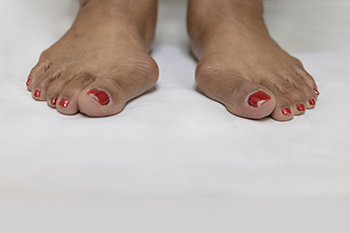 A bony bump that forms on the side of the big toe is considered to be a deformity. This condition is called a bunion and may cause the big toe to shift toward the other toes. A bunion generally occurs from wearing shoes that do not have adequate room for the toes to move freely, thus putting pressure on the joint in the big toe. Interestingly, the word bunion is derived from the Greek word for turnip. A bunion can be red and swollen and shaped like a turnip. Bunions gradually develop, and the growth may be slowed by wearing shoes with a larger toe area. There are also medical reasons linked to the development of bunions, including rheumatoid arthritis and gout, as well as genetic history. Recurring and Severe bunions may require surgery for permanent removal. It is strongly suggested that you confer with a podiatrist who can determine what the best course of treatment is for you.
A bony bump that forms on the side of the big toe is considered to be a deformity. This condition is called a bunion and may cause the big toe to shift toward the other toes. A bunion generally occurs from wearing shoes that do not have adequate room for the toes to move freely, thus putting pressure on the joint in the big toe. Interestingly, the word bunion is derived from the Greek word for turnip. A bunion can be red and swollen and shaped like a turnip. Bunions gradually develop, and the growth may be slowed by wearing shoes with a larger toe area. There are also medical reasons linked to the development of bunions, including rheumatoid arthritis and gout, as well as genetic history. Recurring and Severe bunions may require surgery for permanent removal. It is strongly suggested that you confer with a podiatrist who can determine what the best course of treatment is for you.
If you are suffering from bunions, contact Brent Harwood, DPM from Southeast Podiatry. Our doctor can provide the care you need to keep you pain-free and on your feet.
What Is a Bunion?
A bunion is formed of swollen tissue or an enlargement of boney growth, usually located at the base joint of the toe that connects to the foot. The swelling occurs due to the bones in the big toe shifting inward, which impacts the other toes of the foot. This causes the area around the base of the big toe to become inflamed and painful.
Why Do Bunions Form?
Genetics – Susceptibility to bunions is often hereditary
Stress on the feet – Poorly fitted and uncomfortable footwear that places stress on feet, such as heels, can worsen existing bunions
How Are Bunions Diagnosed?
Podiatrists often perform two tests – blood tests and x-rays – when trying to diagnose bunions, especially in the early stages of development. Blood tests help determine if the foot pain is being caused by something else, such as arthritis, while x-rays provide a clear picture of your bone structure to your podiatrist.
How Are Bunions Treated?
If you have any questions please feel free to contact our offices located in Fairhope, Brewton, and Atmore, AL. We offer the newest diagnostic and treatment technologies for all your podiatric needs.
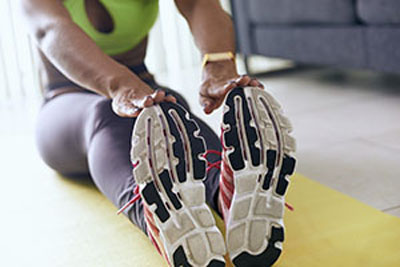 Many patients can find mild relief when stretches are performed for specific foot conditions. Stretches that may ease the pain of plantar fasciitis are often successful in temporarily reducing discomfort, and completing daily tasks may become easier. Calf raises can strengthen the tendons in the calf muscles and heels, which can ultimately make the arch stronger. This is done by standing on a step and lowering the heels one at a time until a gentle stretch is felt. A stretch that is known as doming can control the arch, which may help to prevent excess pronation. This is accomplished by pressing the toes down while standing and keeping the heel firmly planted on the ground. The foot will form an arch, and this is an effective stretch when repeated several times. Towel curls are a popular stretch that can strengthen the entire foot. This is done by laying a towel on the floor and picking it up by using only the toes. There are several stretches that can be done for various parts of the foot. If you would like more information about stretching the feet, it is suggested that you consult with a podiatrist.
Many patients can find mild relief when stretches are performed for specific foot conditions. Stretches that may ease the pain of plantar fasciitis are often successful in temporarily reducing discomfort, and completing daily tasks may become easier. Calf raises can strengthen the tendons in the calf muscles and heels, which can ultimately make the arch stronger. This is done by standing on a step and lowering the heels one at a time until a gentle stretch is felt. A stretch that is known as doming can control the arch, which may help to prevent excess pronation. This is accomplished by pressing the toes down while standing and keeping the heel firmly planted on the ground. The foot will form an arch, and this is an effective stretch when repeated several times. Towel curls are a popular stretch that can strengthen the entire foot. This is done by laying a towel on the floor and picking it up by using only the toes. There are several stretches that can be done for various parts of the foot. If you would like more information about stretching the feet, it is suggested that you consult with a podiatrist.
Stretching the feet is a great way to prevent injuries. If you have any concerns with your feet consult with Brent Harwood, DPM from Southeast Podiatry. Our doctor will assess your condition and provide you with quality foot treatment.
Stretching the Feet
Being the backbone of the body, the feet carry your entire weight and can easily become overexerted, causing cramps and pain. As with any body part, stretching your feet can serve many benefits. From increasing flexibility to even providing some pain relief, be sure to give your feet a stretch from time to time. This is especially important for athletes or anyone performing aerobic exercises, but anyone experiencing foot pain or is on their feet constantly should also engage in this practice.
Great ways to stretch your feet:
Individuals who tend to their feet by regular stretching every day should be able to minimize foot pain and prevent new problems from arising.
If you have any questions please feel free to contact our offices located in Fairhope, Brewton, and Atmore, AL. We offer the newest diagnostic and treatment technologies for all your podiatric needs.
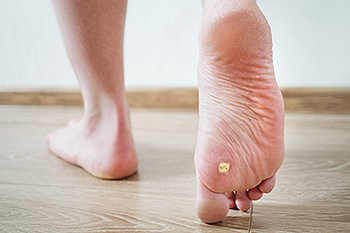 Plantar warts are often confused with other kinds of foot conditions such as corns. However, plantar warts are importantly different from corns, and anyone who cares about maintaining the health of their feet ought to be familiar with what is unique about them. Plantar warts are growths on the feet that are ultimately caused by the human papillomavirus. These growths sometimes can be painful. Plantar warts can, in fact, grow in clusters. However, they do not necessarily do so. These clusters of plantar warts on the bottoms of the feet can present themselves as groupings of warts. Clusters can also form on one or both feet at a time. If you are someone that has plantar warts, contact a podiatrist today to learn more and to receive treatment.
Plantar warts are often confused with other kinds of foot conditions such as corns. However, plantar warts are importantly different from corns, and anyone who cares about maintaining the health of their feet ought to be familiar with what is unique about them. Plantar warts are growths on the feet that are ultimately caused by the human papillomavirus. These growths sometimes can be painful. Plantar warts can, in fact, grow in clusters. However, they do not necessarily do so. These clusters of plantar warts on the bottoms of the feet can present themselves as groupings of warts. Clusters can also form on one or both feet at a time. If you are someone that has plantar warts, contact a podiatrist today to learn more and to receive treatment.
Plantar warts can be very uncomfortable. If you need your feet checked, contact Brent Harwood, DPM from Southeast Podiatry. Our doctor will assist you with all of your foot and ankle needs.
About Plantar Warts
Plantar warts are the result of HPV, or human papillomavirus, getting into open wounds on the feet. They are mostly found on the heels or balls of the feet.
While plantar warts are generally harmless, those experiencing excessive pain or those suffering from diabetes or a compromised immune system require immediate medical care. Plantar warts are easily diagnosed, usually through scraping off a bit of rough skin or by getting a biopsy.
Symptoms
Treatment
To help prevent developing plantar warts, avoid walking barefoot over abrasive surfaces that can cause cuts or wounds for HPV to get into. Avoiding direct contact with other warts, as well as not picking or rubbing existing warts, can help prevent the further spread of plantar warts. However, if you think you have developed plantar warts, speak to your podiatrist. He or she can diagnose the warts on your feet and recommend the appropriate treatment options.
If you have any questions please feel free to contact our offices located in Fairhope, Brewton, and Atmore, AL. We offer the newest diagnostic and treatment technologies for all your podiatric needs.
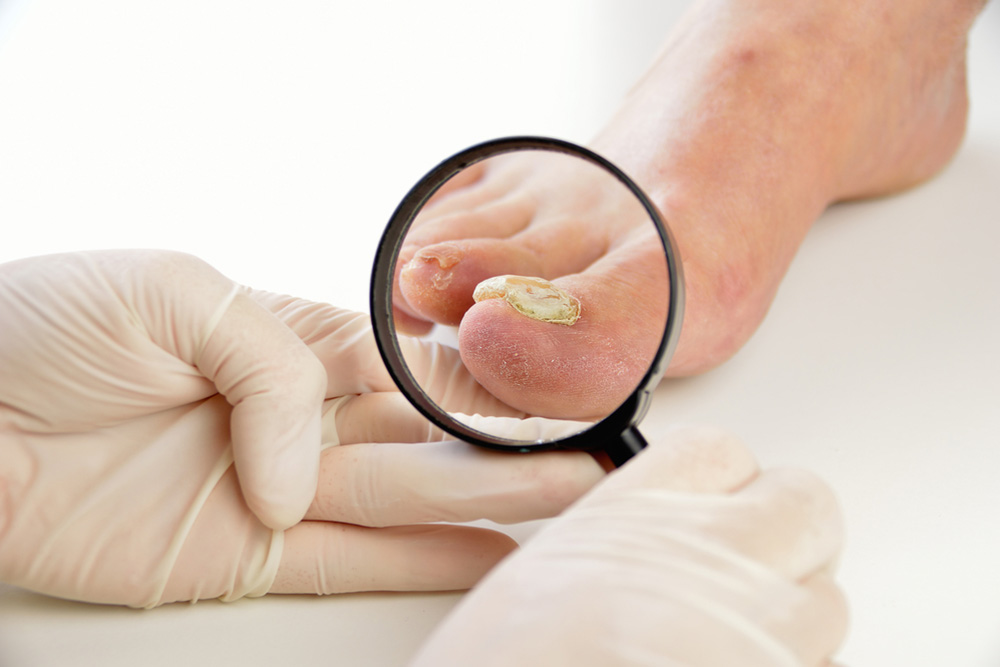 Toenail fungus, also termed onychomycosis, is a pervasive infection that causes discoloration and, in some cases, crumbling of the toenails. It is caused by a variety of fungi that thrive in dark, moist conditions, like the inside of socks and shoes. The fungi feed on keratin, which is the substance that makes up the hardened surface of your toenails. This type of toenail infection is not likely to heal on its own. Therefore, it is imperative to consult with a podiatrist who will be able to determine a course of treatment. The foot doctor may take a sample of the toenail and have it analyzed. Treatment may include removal of part of the toenail along with an antifungal cream, solution, or medicated nail polish. In more advanced cases, the podiatrist may prescribe an oral antifungal medication. And in the most severe cases, removal of the entire nail may be required. Changes to footwear and to foot care practices can help to keep the infection from recurring. For help with toenail fungal infections, please contact a podiatrist.
Toenail fungus, also termed onychomycosis, is a pervasive infection that causes discoloration and, in some cases, crumbling of the toenails. It is caused by a variety of fungi that thrive in dark, moist conditions, like the inside of socks and shoes. The fungi feed on keratin, which is the substance that makes up the hardened surface of your toenails. This type of toenail infection is not likely to heal on its own. Therefore, it is imperative to consult with a podiatrist who will be able to determine a course of treatment. The foot doctor may take a sample of the toenail and have it analyzed. Treatment may include removal of part of the toenail along with an antifungal cream, solution, or medicated nail polish. In more advanced cases, the podiatrist may prescribe an oral antifungal medication. And in the most severe cases, removal of the entire nail may be required. Changes to footwear and to foot care practices can help to keep the infection from recurring. For help with toenail fungal infections, please contact a podiatrist.
For more information about treatment, contact Brent Harwood, DPM from Southeast Podiatry. Our doctor can provide the care you need to keep you pain-free and on your feet.
Toenail Fungus Treatment
Toenail fungus is a condition that affects many people and can be especially hard to get rid of. Fortunately, there are several methods to go about treating and avoiding it.
Antifungals & Deterrence
Oral antifungal medicine has been shown to be effective in many cases. It is important to consult with a podiatrist to determine the proper regimen for you, or potentially explore other options.
Applying foot powder on the feet and shoes helps keep the feet free of moisture and sweat.
Sandals or open-toed shoes – Wearing these will allow air movement and help keep feet dry. They also expose your feet to light, which fungus cannot tolerate. Socks with moisture-wicking material also help as well.
If you have any questions please feel free to contact our offices located in Fairhope, Brewton, and Atmore, AL. We offer the newest diagnostic and treatment technologies for all your podiatric needs.
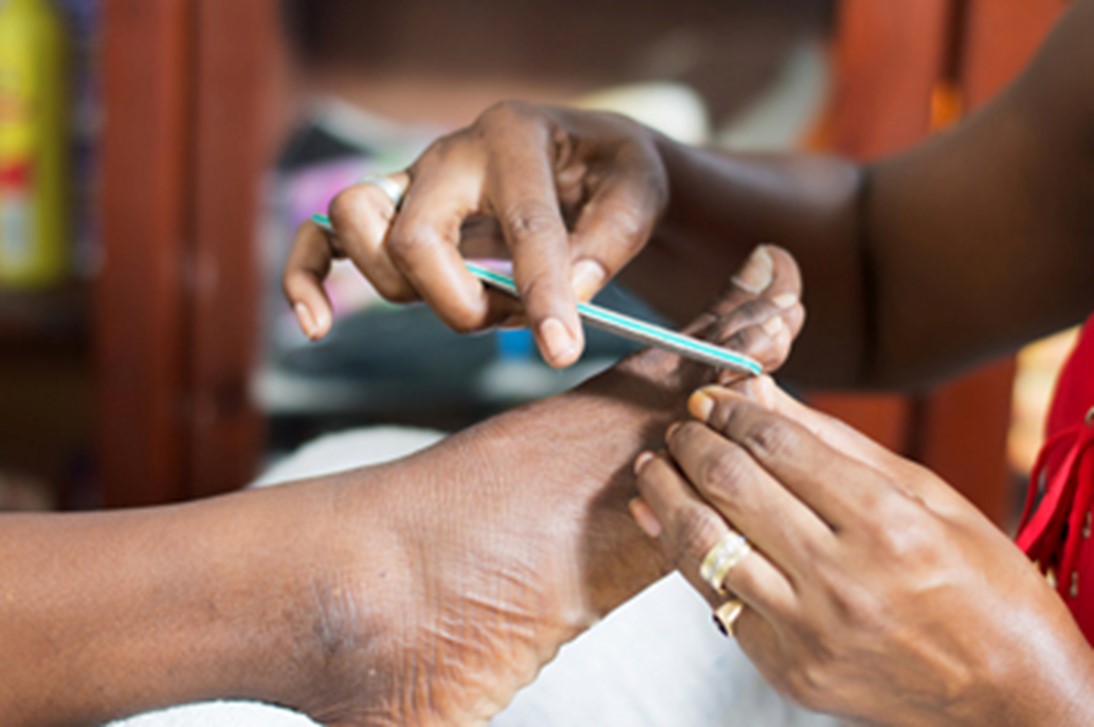 Feet that feel good may positively affect the overall body. Simple methods can be implemented for everyday foot care, and this often begins with washing and drying the feet. Many people apply a good moisturizer which may be beneficial in keeping the skin smooth, and possibly preventing cracked heels from developing. The feet can be protected by wearing shoes that fit correctly, and this may be helpful in preventing corns and calluses. Ingrown toenails may be avoided when the toenails are trimmed properly, and wearing appropriate shoes while in public swimming areas may prevent uncomfortable fungal infections. Circulation in the feet may be improved when exercises and stretches are frequently performed, and many people enjoy getting foot massages. If you would like additional information about successful everyday foot care tips, please schedule an appointment with a podiatrist.
Feet that feel good may positively affect the overall body. Simple methods can be implemented for everyday foot care, and this often begins with washing and drying the feet. Many people apply a good moisturizer which may be beneficial in keeping the skin smooth, and possibly preventing cracked heels from developing. The feet can be protected by wearing shoes that fit correctly, and this may be helpful in preventing corns and calluses. Ingrown toenails may be avoided when the toenails are trimmed properly, and wearing appropriate shoes while in public swimming areas may prevent uncomfortable fungal infections. Circulation in the feet may be improved when exercises and stretches are frequently performed, and many people enjoy getting foot massages. If you would like additional information about successful everyday foot care tips, please schedule an appointment with a podiatrist.
Everyday foot care is very important to prevent infection and other foot ailments. If you need your feet checked, contact Brent Harwood, DPM from Southeast Podiatry. Our doctor can provide the care you need to keep you pain-free and on your feet.
Everyday Foot Care
Often, people take care of their bodies, faces, and hair more so than they do for their feet. But the feet are a very important aspect of our bodies, and one that we should pay more attention to. Without our feet, we would not be able to perform most daily tasks.
It is best to check your feet regularly to make sure there are no new bruises or cuts that you may not have noticed before. For dry feet, moisturizer can easily be a remedy and can be applied as often as necessary to the affected areas. Wearing shoes that fit well can also help you maintain good foot health, as well as making it easier to walk and do daily activities without the stress or pain of ill-fitting shoes, high heels, or even flip-flops. Wearing clean socks with closed shoes is important to ensure that sweat and bacteria do not accumulate within the shoe. Clean socks help to prevent Athlete’s foot, fungi problems, bad odors, and can absorb sweat.
If you have any questions please feel free to contact our offices located in Fairhope, Brewton, and Atmore, AL. We offer the newest diagnostic and treatment technologies for all your podiatric needs.
 The feet are complex structures, and it may be easy for several bones, muscles, and tendons to move out of alignment. The feet are responsible for balancing the body, and certain foot conditions may cause foot pain, possibly affecting the entire body. Many patients look for relief and comfort, and may find it beneficial to wear custom-made orthotics. These are insoles that are specifically designed for an individual's feet and may provide stability, correct misalignments, and reduce existing foot pain. Additionally, the benefits of wearing orthotics can include preventing injuries, improving general well-being, and enhancing athletic performance. There are different types of orthotics that can be considered. If you have foot pain, please consult with a podiatrist who can determine if orthotics are right for you.
The feet are complex structures, and it may be easy for several bones, muscles, and tendons to move out of alignment. The feet are responsible for balancing the body, and certain foot conditions may cause foot pain, possibly affecting the entire body. Many patients look for relief and comfort, and may find it beneficial to wear custom-made orthotics. These are insoles that are specifically designed for an individual's feet and may provide stability, correct misalignments, and reduce existing foot pain. Additionally, the benefits of wearing orthotics can include preventing injuries, improving general well-being, and enhancing athletic performance. There are different types of orthotics that can be considered. If you have foot pain, please consult with a podiatrist who can determine if orthotics are right for you.
If you are having discomfort in your feet and would like to try orthotics, contact Brent Harwood, DPM from Southeast Podiatry. Our doctor can provide the care you need to keep you pain-free and on your feet.
What Are Orthotics?
Orthotics are inserts you can place into your shoes to help with a variety of foot problems such as flat feet or foot pain. Orthotics provide relief and comfort for minor foot and heel pain but can’t correct serious biomechanical problems in your feet.
Over-the-Counter Inserts
Orthotics come in a wide variety of over-the-counter inserts that are used to treat foot pain, heel pain, and minor problems. For example, arch supports can be inserted into your shoes to help correct overarched or flat feet, while gel insoles are often used because they provide comfort and relief from foot and heel pain by alleviating pressure.
Prescription Orthotics
If over-the-counter inserts don’t work for you or if you have a more severe foot concern, it is possible to have your podiatrist prescribe custom orthotics. These high-quality inserts are designed to treat problems such as abnormal motion, plantar fasciitis, and severe forms of heel pain. They can even be used to help patients suffering from diabetes by treating foot ulcers and painful calluses and are usually molded to your feet individually, which allows them to provide full support and comfort.
If you are experiencing minor to severe foot or heel pain, it’s recommended to speak with your podiatrist about the possibility of using orthotics. A podiatrist can determine which type of orthotic is right for you and allow you to take the first steps toward being pain-free.
If you have any questions please feel free to contact our offices located in Fairhope, Brewton, and Atmore, AL. We offer the newest diagnostic and treatment technologies for all your podiatric needs.